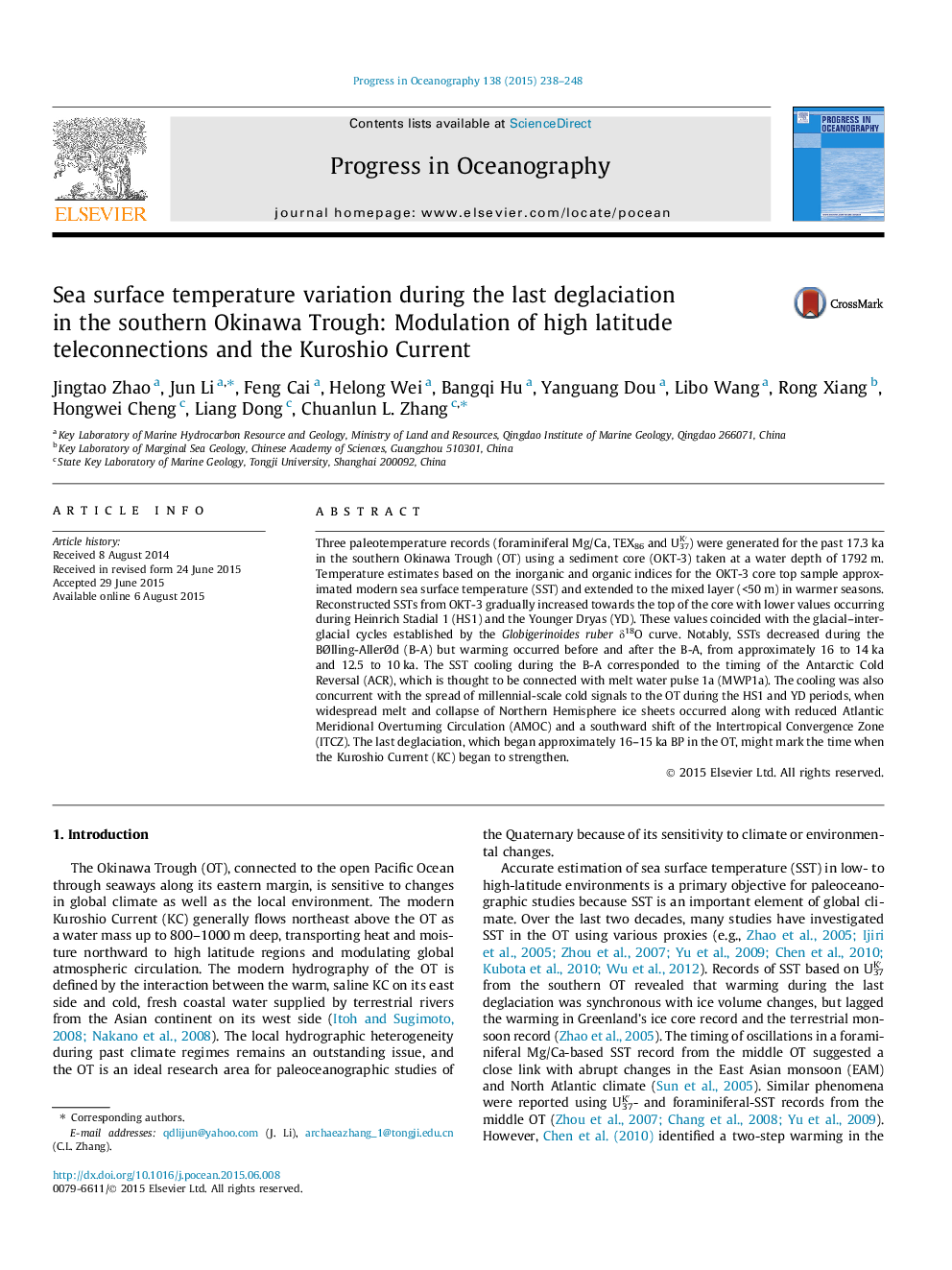| Article ID | Journal | Published Year | Pages | File Type |
|---|---|---|---|---|
| 6388481 | Progress in Oceanography | 2015 | 11 Pages |
â¢Multi-paleotemperature records were generated in the southern Okinawa Trough.â¢Core top sample approximated the SST extending to the mixed layer in warmer seasons.â¢Drop of SST during the B-A corresponds to the timing of the Antarctic Cold Reversal.â¢Low SST during the HS1 and YD corresponds to the millennial-scale cold signals.
Three paleotemperature records (foraminiferal Mg/Ca, TEX86 and UKâ²37) were generated for the past 17.3 ka in the southern Okinawa Trough (OT) using a sediment core (OKT-3) taken at a water depth of 1792 m. Temperature estimates based on the inorganic and organic indices for the OKT-3 core top sample approximated modern sea surface temperature (SST) and extended to the mixed layer (<50 m) in warmer seasons. Reconstructed SSTs from OKT-3 gradually increased towards the top of the core with lower values occurring during Heinrich Stadial 1 (HS1) and the Younger Dryas (YD). These values coincided with the glacial-interglacial cycles established by the Globigerinoides ruber δ18O curve. Notably, SSTs decreased during the BÃlling-AllerÃd (B-A) but warming occurred before and after the B-A, from approximately 16 to 14 ka and 12.5 to 10 ka. The SST cooling during the B-A corresponded to the timing of the Antarctic Cold Reversal (ACR), which is thought to be connected with melt water pulse 1a (MWP1a). The cooling was also concurrent with the spread of millennial-scale cold signals to the OT during the HS1 and YD periods, when widespread melt and collapse of Northern Hemisphere ice sheets occurred along with reduced Atlantic Meridional Overturning Circulation (AMOC) and a southward shift of the Intertropical Convergence Zone (ITCZ). The last deglaciation, which began approximately 16-15 ka BP in the OT, might mark the time when the Kuroshio Current (KC) began to strengthen.
